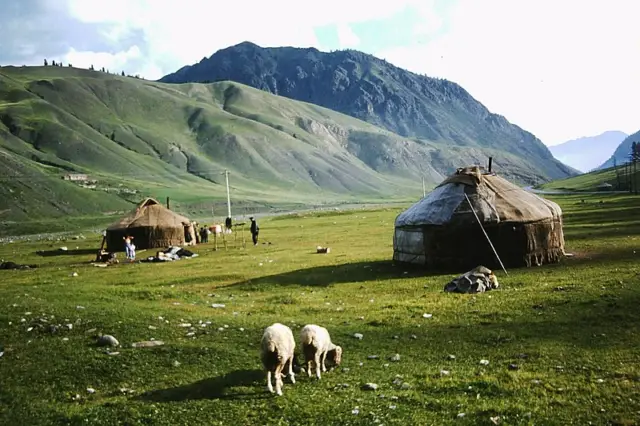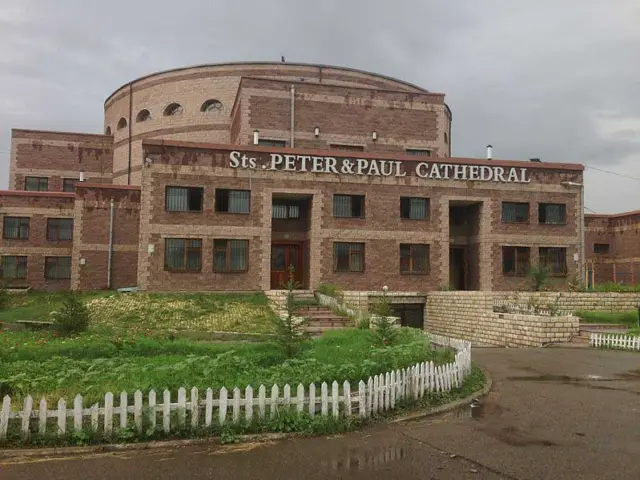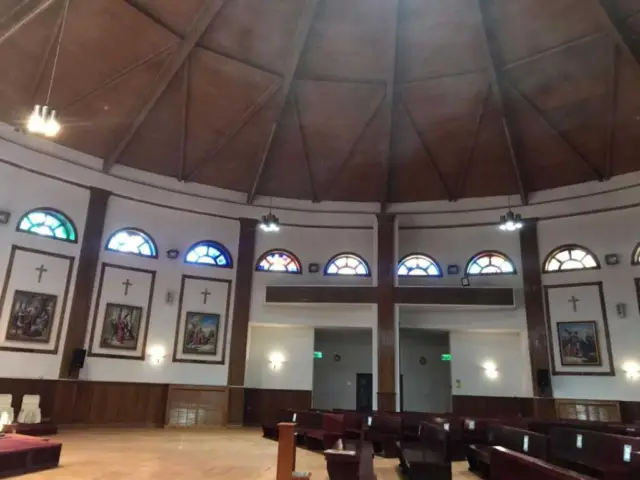About Mongolia:
Mongolia can be a bit confusing. There is both an Inner Mongolia (an autonomous region of China equivalent to a province) and the country of Mongolia (sometimes called Outer Mongolia) which is an independent country, landlocked and sandwiched between China and Russia. In geographic terms, it is about six times the size of the United Kingdom and about 2.3 times the size of Texas. The population was about 3.5 million people in 2022, which makes it one of the least densely populated of any country in the world.
Many of the population are nomads…moving their livestock from one area to another throughout the year, and living off the land. They live in a yurt, or ger, which is a portable, circular dwelling. You can find an interesting description from National Geographic here.
The rest of the population is primarily centered in one city, Ulaanbaatar, which has a population of about 1.5 million.
A Brief History of the Catholic Church in Mongolia:
Catholicism was first introduced in the 13th century during the Mongol empire, but died out along with the Yuan Dynasty in 1368. New missionary activity only set in after the Second Opium War in the mid-19th century. A mission was founded for Outer Mongolia, giving Mongolia its first Catholic jurisdiction, but all work ceased within a year once a communist regime came to power.
The fall of communism in 1991 gave way to the introduction of democracy in 1991 and the new Mongolian Constitution of 1992 guaranteed religious liberty, The following year, on April 4, 1992, diplomatic relations with the Vatican were established. Once the Vatican had established diplomatic relations with Mongolia, Missionhurst (the Congregation of the Immaculate Heart of Mary) sent priests Fathers Wenceslao Padilla, Gilbert Sales and Robert Goessens to accomplish this mission . This was an immense task, since none of the missionaries knew Mongolian, and none of the native peoples knew English. To further complicate their missionary efforts, there were no Catholic liturgical texts printed in Mongolian. The first Masses were held in rented apartments and consisted of foreigners working for embassies and foreign aid organizations.
As time went by, the obstacles were overcome, and in 1996, Father Wenceslao Padilla and 150 parishioners were on hand at the dedication of the first Catholic Church in Mongolian history. In 1997 the first papal nuncio to Mongolia from the Holy See was named.
The new Cathedral of Saints Peter and Paul in Ulaanbaatar is shaped like a traditional ger, with its circular tent shape and walls of thick felt.
Fr Wenceslao Padilla was consecrated as the first Bishop of Mongolia on 29 August, 2003 in the Cathedral of Saints Peter and Paul in Ulaanbaatar.
As of 2023, there are around 1,300 Catholics in the country (out of a population of about 3.5 million) who are served by three churches in the capital of Ulaanbaatar plus churches in Darkhan, Arvaikheer, Erdenet and mission stations that may grow into churches.
Catholic churches in Mongolia:
Ulaanbaatar (capital city and most populous city in the country):
Note: There is one website for all parishes that will give you address, phone and email….link will open in a new window…this window will stay open.
Cathedral in Ulaanbaatar:
Saints Peter and Paul Cathedral
Parishes in Ulaanbaatar:
Good Shepherd
Holy Family Parish
Mother of Mercy Parish
Saint Mary Parish
Saint Thomas Aquinas Chapel
Catholic Parishes in Darkhan city:
Mary Help of Christians
Catholic Parishes in Uvurkhangai province:
Saint Sophia
Saint Thomas Aquinas
Holy Family
Divine Mercy
Mother of God
Catholic parishes in Tuv aimag province:
Merciful God Parish
Mongolian visa and Registration rules for Americans and many other countries:
You do not need a visa if visiting for fewer than 90 days, but your passport must be valid for at least six months beyond your date of arrival. For stays for more than 30 days, register with Mongolian Immigration within seven days of arrival.





